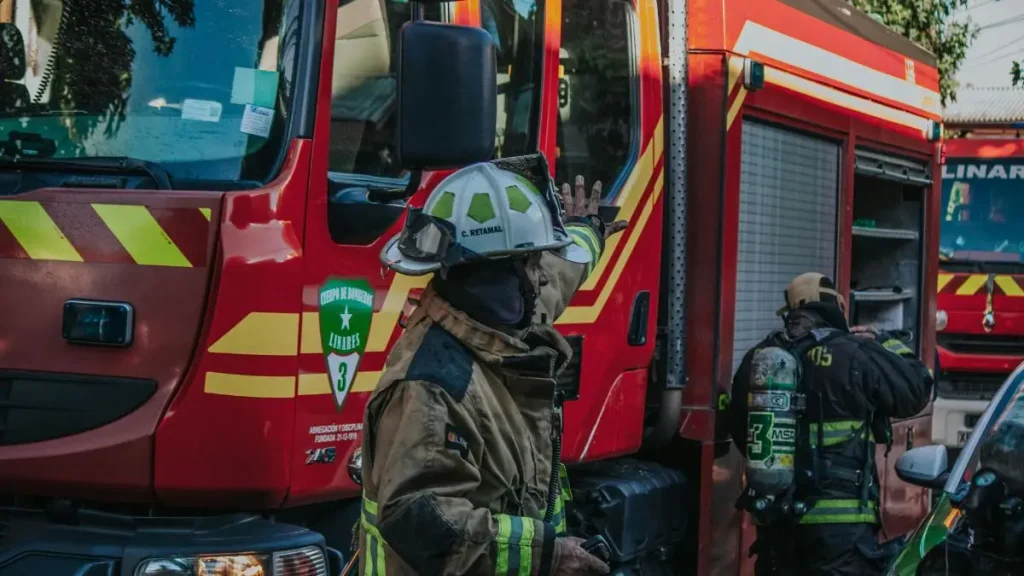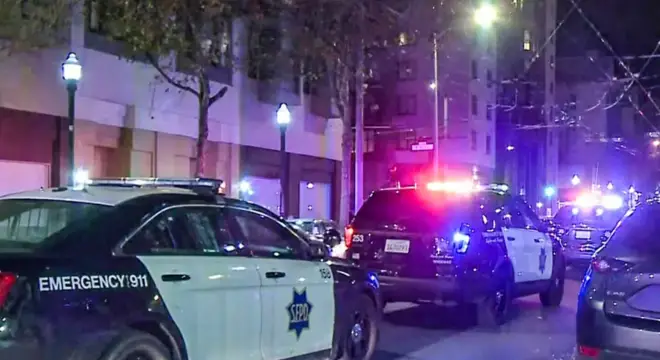Camden, NJ Home Collapses in Wake of Devastating Fire
I’ve seen plenty of fire reports in my time, but the one from Camden still made me pause. A home didn’t just burn — it crumbled, giving way under the heat in the middle of the night.
It happened around 11:30 p.m., on a quiet street where you’d normally expect to hear crickets, not sirens.
Flames raced up to the roof before anyone could catch their breath, and within moments, the structure gave in.
No one was inside, which is the one piece of relief in a scene like this. But the heat was so fierce it melted the siding of the home next door — a reminder that fire doesn’t respect property lines.
Have you ever thought about how quickly something solid can turn to nothing when fire takes over?
How the Collapse Happened – The Moment Everything Gave Way
According to 6abc, the first call to North 25th Street and Harrison Avenue came in around 11:30 p.m. By the time crews arrived, flames had already climbed to the roof. Once a fire reaches that point, it’s attacking the structure’s backbone—the beams and supports that hold everything together.
In older wood-framed homes, intense heat can cause those supports to weaken in minutes, not hours.
Think of it like this: if the frame is the skeleton of the house, fire is like a disease that spreads too fast for the body to fight. The top gives way, and the rest follows.
That’s what happened here. The speed of the collapse wasn’t about bad luck—it was about the perfect storm of heat, material weakness, and timing.
The Hidden Challenges Fire Crews Face in Moments Like This

From a distance, it’s easy to think firefighters just rush in, aim the hose, and the job is done. But on a scene like this—at night, with a fully involved roof—every decision has weight. Darkness limits visibility, narrow residential streets slow down positioning, and water supply isn’t always as reliable as you’d expect.
Crews have to decide: push forward and risk being inside when the structure fails, or stay out and fight it from the perimeter.
In this case, the choice was clear—there were no occupants inside, so risking lives wasn’t worth it. The priority shifted to protecting neighboring homes, but even then, the radiant heat was strong enough to melt the siding next door.
That detail tells you just how aggressive this fire was—danger doesn’t stop at property lines.
In some cases, like the Orange County mobile home fire that killed a 73-year-old woman, firefighters face similar heat dangers that threaten both structures and crews.
Why the Investigation Matters for You and Me
Right now, fire investigators are combing through the debris to find the cause. They’ll look for the fire’s point of origin, examine electrical systems, and study burn patterns to understand how it spread.
Sometimes the cause is straightforward, like a faulty wire or unattended candle. Other times, it’s more serious—deliberate ignition or structural neglect.
You might wonder why this matters if it’s not your home. The truth is, knowing why a fire happened gives the rest of us a chance to prevent the same mistake.
If it’s an electrical issue, that’s your cue to get your own wiring checked. If it’s arson, that’s a conversation about neighborhood watch, security cameras, and staying alert. These aren’t just news stories—they’re warnings.
Investigations have revealed causes ranging from electrical faults to intentional acts — as seen in the Philadelphia house fire in Mayfair that left three dead.
Simple Fire Safety Lessons You Can Act on Today
Fire safety doesn’t start when the flames appear—it starts long before. You can do small, practical things that stack the odds in your favor. Keep your attic and roof space clean and free of flammable clutter. Make sure your vents are clear and your wiring is up to code.
If you live in an older home, regular inspections are worth the cost—they catch problems before they become disasters.
Think about your street. If houses are close together, talk to your neighbors about what you’d do if a fire broke out nearby.
Have a shared plan for calling 911, alerting each other, and clearing the area for fire crews. Fires spread faster than most people expect—seconds can decide whether a home is saved or lost.
For more quick fire safety tips and local safety alerts, you can even get updates directly on WhatsApp — it’s a great way to stay prepared without having to search for news every time.
Camden’s Fire in the Bigger Picture

What happened in Camden isn’t an isolated tragedy. Across New Jersey, there have been similar collapses—in Jersey City, Millville, and Irvington—often in older or vacant properties. The common thread? Fast-moving flames meeting structural weaknesses that can’t withstand the heat.
Each of these events leaves more than just ashes behind—they leave lessons. They remind us that age, maintenance, and community preparedness matter.
The more we pay attention to these patterns, the better chance we have of breaking them. Ignoring them means accepting that the next headline could be about your street.
And just like the Northwest Indiana home destroyed by fire, these incidents highlight how fast flames can overwhelm older structures.
How You and Your Community Can Be Ready
If there’s one thing I’ve learned, it’s that fire safety is never just an individual effort—it’s a community mindset.
You can start small: check your smoke alarms, update your emergency contact list, and talk to your neighbors about what you’d do in a fire.
But don’t stop there. Get familiar with your local fire department’s resources—they often run free safety checks or training sessions. If you see a vacant home in your area, report hazards before they become a problem.
And most importantly, keep the conversation going. The more you and your community stay alert, the less likely you’ll be caught off guard.
Disclaimer: The information in this article is based on publicly available reports and expert insights at the time of writing. Details may change as official investigations progress. This content is intended for public awareness and safety education, not as an official incident report.


